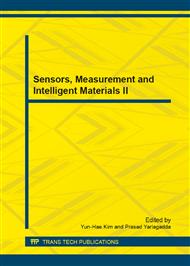[1]
R. Jin , L. Si, C.X. Zhai, J. Callan, Collaborative Filtering with Decoupled Models for Preferences and Ratings, In: 03 Proceeding of the twelfth international conference on Information and knowledge management, New York, Nov. 03-08, 2003, pp.309-316.
DOI: 10.1145/956863.956922
Google Scholar
[2]
B. Prasad, Case-Based Reasoning Research and Development, Vol. 3620 (2005), pp.408-420.
Google Scholar
[3]
G. Adomavicius, A. Tuzhilin, Journal of TKDE. Vol. 17 (2005), pp.734-749.
Google Scholar
[4]
S.J. Gong, H.W. Ye, H.S. Tan, Combining Memory-Based and Model-Based Collaborative Filtering in Recommender System, ICCCAS, May 16-17, 2009, pp.690-693.
DOI: 10.1109/paccs.2009.66
Google Scholar
[5]
B. Krulwich: Lifestyle finder, AI Magazine, Vol. 18 (1997), p.37–45.
Google Scholar
[6]
R. Burke, Journal of User Modeling and User-Adapted Interaction, Vol. 12 (2002), pp.331-370.
DOI: 10.1023/a:1021240730564
Google Scholar
[7]
Z.Z. Mi, C.F. Xu, Bio-Inspired Computing and Applications, Vol. 6840 (2012), pp.160-167.
Google Scholar
[8]
M. Luis, M. Juan, F.H. Juan, A.R. Miguel, International Journal of Approximate Reasoning, Vol. 51(2010), pp.785-799.
Google Scholar
[9]
P. Wang, H.W. Ye, A Personalized Recommendation Algorithm Combining Slope One Scheme and User Based Collaborative Filtering, Industrial and Information Systems, pp.152-154, (2009).
DOI: 10.1109/iis.2009.71
Google Scholar
[10]
X.Y. Shi, H.W. Ye, S.J. Gong, Business and Information Management, Vol. 1 (2008), pp.264-267.
Google Scholar
[11]
S.J. Gong, H.W. Ye, Joining User Clustering and Item Based Collaborative Filtering in Personalized Recommendation Services, Industrial and Information Systems, Aug. 8-11, 2009, pp.149-151.
DOI: 10.1109/iis.2009.70
Google Scholar
[12]
Q. Wang, X.H. Yuan, M. Sun, FSKD, Vol. 4 (2010), p.1985-(1990).
Google Scholar
[13]
M. Vozalis, Journal of Web Intelligence Consortium (WIC), Vol. 4 (2006), pp.117-138.
Google Scholar
[14]
M.A. Ghazanfar, Bennett, A. P., A Scalable, Accurate Hybrid Recommender System, In: 2010 Third International Conference on Knowledge Discovery and Data Mining, Phuket, Thailand, Jan. 9-10, 2010, pp.94-98.
DOI: 10.1109/wkdd.2010.117
Google Scholar
[15]
L. Jonathan, J.A.K. Herlocker, G.T. Loren, T.R. John, Journal of TOIS (2004).
Google Scholar


